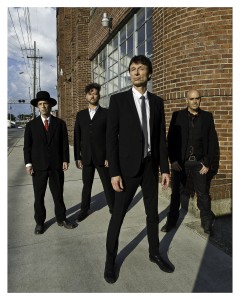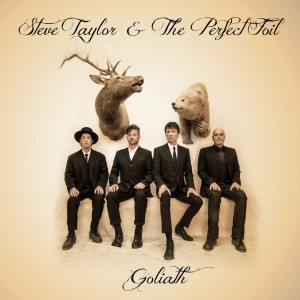If I have anything resembling a “mission” here at this blog, it began to take shape when I was a teenager whose world was comprised of a Conservative Baptist church, a “Christian” school, “Christian” music, “Christian” fiction, “Christian” textbooks, and “Christian” visual art — an overwhelmingly Protestant Evangelical culture.
 I remain grateful for most of the gifts and rewards of those experiences. But I am still struggling with the lingering influence of certain delusions that were prevalent in those worlds — attitudes and behaviors that had little or nothing to do with the Gospel, but that had everything to do with fear, prejudice, and a sort of cultural separatism, tribalism, and judgmentalism. Early on, I absorbed a spirit of condemnation toward the world beyond evangelical Christian culture and its strict definitions.
I remain grateful for most of the gifts and rewards of those experiences. But I am still struggling with the lingering influence of certain delusions that were prevalent in those worlds — attitudes and behaviors that had little or nothing to do with the Gospel, but that had everything to do with fear, prejudice, and a sort of cultural separatism, tribalism, and judgmentalism. Early on, I absorbed a spirit of condemnation toward the world beyond evangelical Christian culture and its strict definitions.
My slow awakening to “freedom in Christ” — real freedom, which inspires me today to explore larger worlds without a spirit of fear and condemnation, and which motivates me to seek Christ in the form of truth and beauty everywhere — began in my experience of music. Particularly, it began with an increasing restlessness that I felt in high school as I grew weary of the relentless, unflinching solemnity and the sanitized sentimentality of most so-called “contemporary Christian music.”
The more I became exposed to excellence in music — through television, through the radio, through the music that some of my classmates played on their Walkmans and boom boxes — the more I cringed at what I heard on Christian radio: a tiresome program of redundant, shallow praise songs. Most of them took phrases, and sometimes whole verses, from the Scriptures, but scraped them clean of their context, their darker edges, their more complicated sentiments. The Book of Psalms is full of praises, but also laments, questions, outbursts of anger and frustration, and direct challenges to the Almighty. It is also constantly calling for “a new song” to be offered in praise of God’s greatness. By contrast, this was a steady diet of disposable, derivative choruses, suggesting that the Christian life was primarily about soaking in a bath of constant comfort and familiarity, somewhere inside a glowing Thomas Kinkade cottage, away from the challenges of the world into which Jesus boldly sent us. The music was dominated by effusive piano flourishes, heavily processed synthesizer sounds, cheesy drum machines, and amateur electric guitars — the farthest thing from excellence, exploration, risk, or intimacy. Worse — it was often a cheap imitation of what had been popular on “secular” radio stations a year or two earlier.
In short, the music I heard — and most of the art that I encountered — rarely challenged me, provoked me, or invited me to think about the Almighty, or about how his constantly mentioned “glory” might actually manifest itself. It was predictability over poetry. It was push-button emotionalism over thought-provoking art.
The more I paid attention to the example of Jesus himself, the more I realized that he was not inclined to give anybody easy comforts or to merely encourage people with familiar refrains. His storytelling and speaking discomforted those who were comfortable, while challenging the afflicted to engage with God in a way that would give them real hope, not… um… “an anesthetic aesthetic.”
Then along came Steve Taylor.
He was a rock artist who stood out from the pack — one more prone to satire than sentimentality, one who had a tendency to holding up a mirror to Christian culture that would spur us to self-reflection and an awareness of our own constant need to repent and start anew.
A lot of Christian music fans were not happy about that at all. They saw him as disloyal, cynical, and guilty of “attacking” Christian culture (and thus attacking Jesus himself). They were upset that he would air Christians’ dirty laundry, as if it is a good Christian’s responsibility to cloak all of our weaknesses in a disguise of perfection and righteousness.
But they didn’t offend me. They had the ring of truth. They had a way of honoring the truth by providing me with an X-ray of my own culture and revealing those places that were weak, diseased, or broken. What’s more, they were wildly creative, musically boundless, filled with self-effacing humor, and cleverly written. They made me believe that I could hold fast to my faith and yet pursue creativity with courage and freedom, and that it was a meaningful (and even sacred) pursuit to challenge my own culture and community about blind spots and weaknesses.
 His albums from the early ’80s do sound rather dated now. (How many early ’80s albums don’t?) I don’t think he really found his footing musically until 1987’s I Predict 1990, and he refined that on the follow-up record Squint. His first rock band project, Chagall Guevara — an endeavor that was not branded as “Christian” in any way, and that seemed to reflect insight and imagination in a more cohesive and adventurous way — had Rolling Stone making a complimentary comparison to The Clash. And his fans were ready for a promising future.
His albums from the early ’80s do sound rather dated now. (How many early ’80s albums don’t?) I don’t think he really found his footing musically until 1987’s I Predict 1990, and he refined that on the follow-up record Squint. His first rock band project, Chagall Guevara — an endeavor that was not branded as “Christian” in any way, and that seemed to reflect insight and imagination in a more cohesive and adventurous way — had Rolling Stone making a complimentary comparison to The Clash. And his fans were ready for a promising future.
Then, Taylor followed his muse in surprising directions. He became a producer. (We have him to thank for bringing Sixpence None the Richer into the spotlight.) And, eventually, a filmmaker. (He directed a film called The Second Chance, which was unpopular for daring to cast Michael W. Smith in a film that challenged the “megachurch” model, and the recent adaptation of Blue Like Jazz.)
In my opinion, though, the peak of his creative endeavors has come this year with his return to the microphone, and with the arrival of an album called Goliath, on which he’s the front man for a new band called The Perfect Foil. It’s a strong, searing rock record with some of Taylor’s finest, sharpest writing, and a finale called “Comedian” that I’d argue is the crowning achievement of his career as a songwriter.
So it is a thrill for me to welcome Steve Taylor as Looking Closer’s first guest DJ for today. Here’s a playlist that he calls…
“Twelve Days of Christmas Music.”
STEVE TAYLOR:
1.
Low – “Christmas”
This is typically the first album we spin to announce the season has officially begun. “Long Way Around The Sea” is pure cinema.
2.
Ralph Vaughn Williams – “Fantasia on Greensleeves”
Should be the official soundtrack of Advent.
3.
The Clash – “Lost In The Supermarket”
The song that plays in my head the moment I set foot in any mall.
4.
“Une Nuit De Noel A Notre-Dame De Paris”
Available on iTunes.
My wife Debbie and I have spent a few Christmases in Paris, and this album of organ and choir Christmas music recorded in Notre Dame Cathedral takes us back to a very memorable Midnight Mass.
5.
Newsboys – “Adoration”
When you hear this track, you’ll understand why.
6.
Over The Rhine – “All I Ever Get For Christmas Is Blue”
The antidote to excess holiday sentimentality.
7.
The Chieftains with Marianne Faithfull – “I Saw Three Ships A Sailing”
Hearing Marianne Faithfull sing these lyrics gives me hope.
8.
Berliner Philharmoniker – “The Nutcracker”
Available at Amazon.
I heard this played by the Denver Philharmonic Orchestra as a child, and it was magic.
9.
Peter Furler – “Christmas”
Preview the whole album on YouTube.
I realize it’s highly suspicious to include my band mate on this list, but again, when you hear the album you’ll understand why.
10.
Vince Guaraldi Trio – “A Charlie Brown Christmas”
If I didn’t include this, I wouldn’t be an American.
11.
Nat King Cole – “Oh Holy Night”
The older I get, the more his voice sounds like a miracle.
12.
Rev. Roland S. Taylor – “Dreaming Of Christmas”
And speaking of mellifluous voices, my dad recorded this Christmas album when I was a boy, and it’s still one of my favorites.